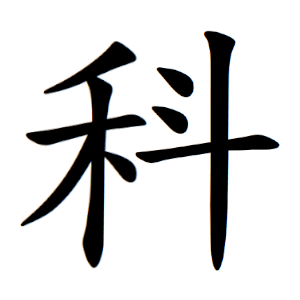科
- subject, section, department;
Extended meanings: from “measurement”, “standard”, “division, category”, “subject or course” (as in education).
Etymology
Composition: 禾 (hé – grain) + 斗 (dǒu – measuring cup).
In Shuowen Jiezi (説文解字 shuōwén jiězì): 禾 is treated as semantic (“grain,” representing things to be measured) and 斗 as semantic (“measuring tool”).
Modern philologists (e.g., Zhengzhang Shangfang) argue 禾 may also function phonetically here (Old Chinese ɡoːl, influencing 科 khoːl).
Original meaning: “to measure grain,” “to weigh,” or “to calculate.”
Usage in Korean
Modern meaning most often relates to academic or official divisions (school subjects and administrative departments):
科目 (과목) – school subject, curriculum item;
醫科 (의과) – medical department;
文科 / 理科 – humanities / sciences in education.
Historically, it also referred to:
- levies or taxes (to “impose an assessment”);
- governmental divisions (departments, bureaus).
Words that derived from 科
- 竹木卜十 (HDYJ)
- ⿰ 禾 斗
